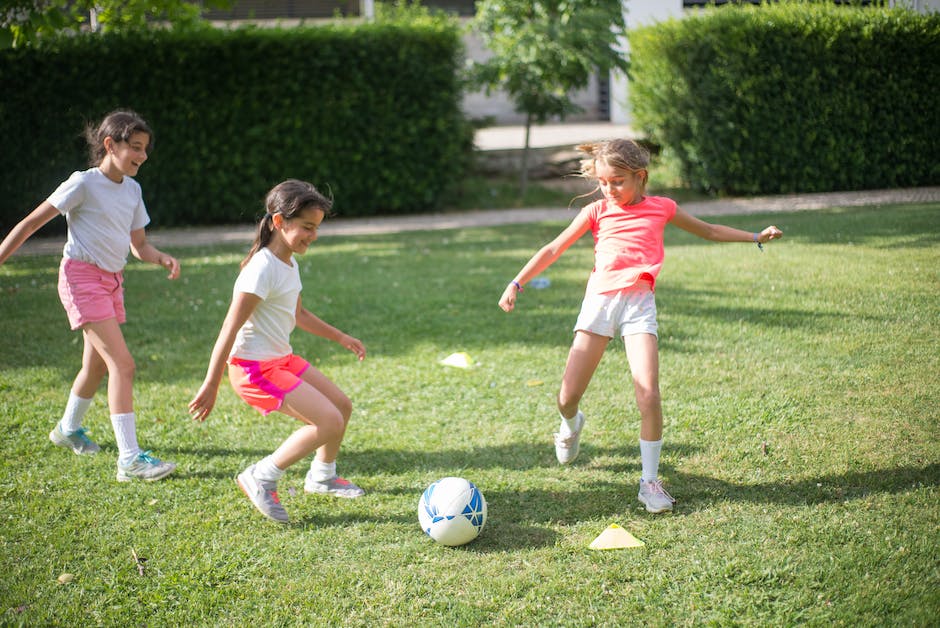Childhood obesity poses a serious threat to the health and wellbeing of young individuals, setting them on a trajectory towards chronic health conditions in their adult lives. As advocates of a healthy future for our kids, it is incumbent upon us to understand this issue intimately and fight it strategically. The nuances of childhood obesity involve numerous factors – individual dietary habits, physical activities, parental influence, and the environment provided by schools. As we delve deeper into each of these elements, we strive to uncover effective measures and actionable insights to combat childhood obesity. Not only does this require an understanding of the risks and complications associated with obesity, but it also necessitates a comprehensive knowledge of what constitutes a balanced diet, the crucial role of physical activities, the significant impact of parental influence and the proactive measures that schools can undertake.
Understanding Childhood Obesity
Understanding Childhood Obesity and Its Impact on Our Families
In the hum and buzz of the exciting parenting journey, one thing we all share is the consistent concern for our children’s well-being. Today, we focus on a prevalent issue that makes parents around the globe toss and turn at night: childhood obesity.
Obesity is a medical condition characterized by an excess of body fat. Applying this to children, we understand childhood obesity as an alarming health condition where a child or adolescent is significantly overweight for their age and height. It’s not just about a child who looks round or chubby but it extends to a matter of overall health.
Childhood obesity has become a serious public health concern due to an alarming increase in numbers over the last few decades. Recent reports show that across the America, almost one in five (approximately 18.5%) children between the ages of 2 and 19 suffer from obesity. Tracing these numbers back to the roots, we find that an unhealthy mix of a high-calorie diet and insufficient physical activity is majorly to blame.
But why should childhood obesity concern us as parents, and as a community? Well, the reasons are manifold.
Firstly, children with obesity are quite likely to continue this trend into adulthood. This means, they have a much higher risk for health problems like heart disease, type 2 diabetes, stroke, various types of cancer, and osteoarthritis. None of us wants to imagine our little ones entangled in these health issues as they grow.
Secondly, it’s not just physical health that takes a hit. Childhood obesity could severely impact the psychological health of the child as well. Children battling obesity often face body image issues, low self-esteem, depression, and social isolation due to mocking or bullying from their peers.
The academic achievement of children may be affected too. Evidence suggests a negative correlation between obesity and scholastic performance. This may be linked to illnesses or psychological issues affecting their ability to concentrate in class.
Similarly, it can be detrimental to a child’s sleep pattern. Sleep apnea or breathing troubles during sleep are commonly observed in children dealing with obesity.
Finally, childhood obesity also takes a toll at the broader societal level. It’s a major concern because of the long-term economic costs associated with treating the illnesses it can cause.
Thus, as parents, caregivers, and members of the larger society, it’s essential that we recognize and act against the rising tide of childhood obesity. It’s about focusing on creating an environment at home that encourages healthy eating habits and regular physical activity. Above all, let’s remember, it’s about embracing and promoting a happier and healthier lifestyle for our children. By doing so, we are not just securing the health of our families but also that of our future generations.

Importance of Balanced Diet in Preventing Obesity
A Balanced Diet: An Essential Tool in Preventing Childhood Obesity
In the previous section, we unpacked the severe implications of childhood obesity and the necessitude to mitigate these horrors. Now it’s time to navigate the crucial yet stimulating world of nutrition, bringing us to the ultimate question: How exactly can a balanced diet prevent childhood obesity?
Transforming table meals into a nutrition rainbow can be the key to unlocking a healthier future for our children. The governmental food pyramid provides an insightful guideline for this nutritional variety, stressing the need for fruits, vegetables, lean proteins, whole grains, and limited sweets.
The justification for this variety not only rests on getting a mix of essential nutrients, but also in the prevention of calorie overload typical in a processed and fast-food heavy diet. The beauty of these whole, fresh foods is that they naturally contain fewer calories while packing our littles one’s plates with the necessary vitamins and minerals. They wisely teach our children that delicious doesn’t always equate to unhealthy!
Breakfast is often touted as the most vital meal and this is especially true for our children. A morning meal jumpstarts the metabolism and helps kids stay alert and energized during school hours. While sugary cereals or poptarts may be easy and convenient, healthier choices like oatmeal with fruits, eggs and whole wheat toast or yogurt parfaits can make a world of difference in preventing unnecessary weight gain and promoting overall wellbeing.
Along with ensuring nutrient-rich foods, it’s critical to promote portion control. Even the healthiest of foods can contribute to obesity if eaten in copious amounts. Serving portions that are “kid-sized” and encouraging the habit of mindful eating can play a hugely influential role in maintaining a healthy weight.
While a balanced dinner should be non-negotiable, healthy habits should still extend throughout the day. School lunches and snacks being prime examples. Swap the chips and candy bars for slices of fruits, veggies, nuts and yogurt. And for the beverage, consider water instead of soda or artificially sweetened juices. Making these small shifts aids in maintaining not just a balanced diet but also instills healthy eating habits.
Moreover, it’s essential to educate children about nutrition, making them active participants in their health journey. Raising awareness about what each food group does and why our bodies need them can empower children to make healthier choices on their own.
Parenting, though unquestionably rewarding, comes with its fair share of trials. But remember the mantra – Patience. Consistent adjustments in dietary choices can have an enormous impact on a child’s health and simultaneously prevent obesity. With each healthier swap or shared nutritious meal, you’re molding not only their present but their future.
Life at home also plays a crucial role in this journey. The home environment can either promote or hinder healthy nutrition patterns. So, let’s create an environment where fruits and vegetables are just as much of a staple as love and laughter. Take the battle against childhood obesity beyond the kitchen and into the garden, let’s grow vegetables, pick them, and cook them at the family dinner. As we all know, nothing tastes better than hard work and hand-picked love.
A balanced diet is more than just a set of dietary guidelines; it’s the hotline to long-term health and happiness for our young ones. A wave of healthier changes can set the stage for their adulthood, setting them on a course of lifelong wellness. Be the momentum that propels their future and remember, there’s no better time to start than right now. Because, at the end of the day, we’re not just raising children, we’re raising the next generation of healthy and empowered adults.
Here’s to healthy and happy kids, the future’s brightest stars!

The Role of Physical Activity in Preventing Obesity
Physical Activity: A Key Player in Curbing Childhood Obesity
Some call it the spiraling path to lasting health; others see it as the perfect balance to a nutritious diet. Still, regardless of the angle one might choose to view it from, there’s no debating the undeniable role of physical activity in counteracting childhood obesity.
While the first volley of defense against childhood obesity obviously starts with a healthy diet, it’s the routine and disciplined engagement in physical activity that buttresses this defense. By introducing physical activity into a child’s daily routine, parents can create a foundation for an active lifestyle that may continue into adulthood.
There’s a certain magic about physical activity when combating childhood obesity. That incredible feeling of breathing in the fresh air, sun up or sun down, as young hearts thump in time with a happy rhythm of vitality. It’s not just about burning calories – although, that is indeed one fantastic benefit – it’s also about strengthening little hearts, encouraging bone growth and improving mental health. Yes, the magic of physical activity runs through every aspect of a child’s well-being, making it a crucial facet of their overall development.
Physical activity, however, needs not be reduced to the monotony of scheduled exercise. In fact, making physical activities enjoyable and engaging is the optimum approach. Whether that’s a family bike ride in the park, a friendly game of basketball, or even a simple walk with the family pet, the goal is a seamless integration of physical activity into daily routines. This fosters a love for being active rather than cultivating a sense of obligation. When children perceive physical activity as fun, they’re more apt to engage willingly, voluntarily, and wholeheartedly.
Familiarizing children with various forms of physical activities at a young age also, subtly yet surely, prepares them to face the challenge of controlling their weight more adeptly. As the little ones explore different sports and activities, they not only discover their personal preferences but also gain a broader perspective on fitness and health.
In today’s digital age, we’ve alarmingly started to normalize sedentary behaviors. The allure of screens — be it television, tablets, or mobile phones — can prove rather irresistible to the young minds. Here, parental involvement becomes a significant factor in balancing screen time with physical activity. A loving nudge to switch off the device and partake in physical activity often is all it takes to offset the risks of “screentime-induced” obesity.
In essence, physical activity is the very cornerstone in the foundation of a child’s health. While nutrition fuels the body and mind, routine physical activity reinforces the strength and vitality bestowed by a balanced diet. By helping children experience the joy of active living, parents can set them on the path to a healthier, happier, and possibly, longer life.
So, let’s put the pep in those tiny steps, get those wheels spinning, and watch our children blossom into healthy, active, and thriving individuals. After all, as parents, it’s within our power – and indeed, our responsibility — to gift our children the joy of a robust life, full of movement and vitality. Starting today, let’s make a promise to throw in a healthy share of physical activity into our family’s daily mix!

Parental Influence on Children’s Dietary Behaviors
Delving further into our discussion, let’s talk about the influence of parental behaviors on a child’s dietary habits. Believe it or not, as parents, our diet and exercise routines play a significant role in shaping our children’s eating habits and general health. How, you ask? Let’s dive in.
Children look upon their parents as the primary role models. Therefore, it is not surprising that they tend to mimic the dietary habits of their parents.
A great way to lead by example is by actively including nutritious foods in your meals. Children are less likely to resist eating them if they see you enjoying your veggies too! This strategy isn’t a guarantee, but it does significantly accustom them to food variety and the idea of trying new things. Inviting kids in meal prepping – chopping vegetable or stirring the pot from time to time, can be educationally entertaining and can help develop their cooks and nutritional skills too.
Remember when you would see your mom sneak in a piece of chocolate right after telling you not to eat one? Children are always watching, noting, and copying. That’s why it’s recommended to abstain from unhealthy munching as it may inadvertently encourage them to follow in your footsteps. At least, try appointing specific snack times and stick to it. Consistency is key when influencing habits.
Coming to family meals, they are the backbone of the familial structure and work wonders for a child’s health and dietary behavior. Picture the entire family gathered at the dinner table, happily chatting away and enjoying a nutritious meal. This picture-perfect moment does more than providing nourishment. It develops a positive attitude towards food and prevents unhealthy attitudes like binge eating. Moreover, research suggests that children who regularly eat meals with their families tend to have healthier dietary patterns, including more fruits and vegetables, less saturated fat and sugar.
Now, let’s move from the dining table to the grocery store. Involving children in shopping for groceries can expose them to a variety of food options available and an opportunity to talk about the nutritional values of various foods. Trust me, their curious little minds love the colors, shapes, and stories about their food. Couple it with an engaging story about how carrots help us see in the dark, and you have a win!
Furthermore, parents influence children’s dietary behaviors through control practices. Accommodating your child’s preferences can motivate them to follow a healthier diet. However, be sure not to overdo it. Studies have shown that too much control or restrictions on eating may lead to unhealthy dietary behaviors, including overeating and a preference for high-calorie food.
Last but not least, introducing physical activity as a non-negotiable part of daily life from a young age is crucial. It reinforces the idea that a healthy lifestyle isn’t solely about what you put into your bodies but also what you do with those bodies. Making outdoor activities a family affair or having dance-offs in the living room is an engaging way to instill this concept while having loads of fun.
In conclusion, steps to encourage children’s healthy dietary behaviors are not a one-time task. They require dedication, creative thinking, and lots of patience. But hey, as parents, aren’t those our superpowers? You have what it takes to set your children on a path of lifelong health, balancing fun and moderation. After all, ‘parent’ is another word for guidance and unconditional love!

Involving Schools in the Fight against Obesity
In the face of the childhood obesity epidemic, it’s evident that everyone’s active participation is required for its prevention – and schools play a pivotal role in this collective effort. They serve as an environment where children spend a significant portion of their day and can influence the cultivation of healthy lifestyle habits. So, how can schools contribute to preventing childhood obesity?
One pivotal step is by introducing and maintaining comprehensive health and physical education programs. These should not merely involve rote learning about the food pyramid or caloric values. Instead, approach learning in a practical, well-rounded, and engaging manner that focuses on healthy living from a holistic perspective. Cooking classes, for instance, could be introduced to help children understand the art of creating wholesome, balanced meals. Similarly, a school garden project can help create a better connection between students and nature, highlighting the magic of growing one’s own food.
Physical education should not be limited to runs around a track and the occasional game of kickball. Including a variety of activities catered to different interests promotes an enjoyment of movement, which is far more likely to cultivate a life-long love for fitness. From martial arts to dance to yoga to team sports, the options are diverse and engaging. Schools could also consider running fitness challenges and encouraging extracurricular sports, fostering an atmosphere where physical activity is celebrated.
Moreover, schools have a huge responsibility in creating a healthy food environment. This includes offering healthy food choices to make healthy eating seem less of an obligation and more of a lifestyle. These options should be visible, accessible, and affordable. Similarly, beverages offered should primarily be water and milk, limiting the availability of sugar-loaded drinks. Instead of using candy or unhealthy snacks as rewards, which reinforces their appeal, schools could consider non-food incentives that promote a positive school environment.
Importantly, schools should also build strong partnerships with parents. There’s often a disconnect between food habits at home and at school, which can create confusion in a child’s mind. Regular parent-teacher conferences and workshops on nutrition and child health can support consistency and encourage parents to integrate what schools are teaching about health at home.
Finally, it’s about enabling students to make informed decisions. Given the bombardment of advertisements promoting unhealthy food and drink options to children, it’s crucial that school curriculums address media literacy. Teaching students to deconstruct and analyze such messages can enable them to make the right choices and resist the lure of unhealthy alternatives.
Every day at school is an opportunity for children to learn about, and practice, healthier habits. It’s a chance to educate, shape behaviors, and give every child the opportunity to live a healthier life. Schools play an essential role in this long-term, crucial endeavor. Remember, fighting childhood obesity isn’t merely about changing a number on a scale – it’s about altering a nation’s lifestyle.

Reflecting upon the multi-dimensional aspects of childhood obesity, it is clear that prevention requires a joint effort from parents, schools, and the children themselves. Ensuring a balanced diet, fostering a love for physical activities, demonstrating healthy behaviors at home, and encouraging schools to be proactive in their approach towards health and nutrition are all pivotal. Our approach to countering childhood obesity should be as intricate as the factors causing it. Let us remember – achieving a healthy weight is not just about looking good; it’s about celebrating life, getting more active and enthusiastic about our days. As adults, it is our responsibility to equip our children with the right knowledge and habits to guide them in their journey towards a healthy future.
Writio: Your AI partner in content creation! This page was crafted by Writio, the expert in generating top-notch website articles. Let your ideas come to life effortlessly!
Thank you for reading this post, don't forget to subscribe to our free newsletter
!
